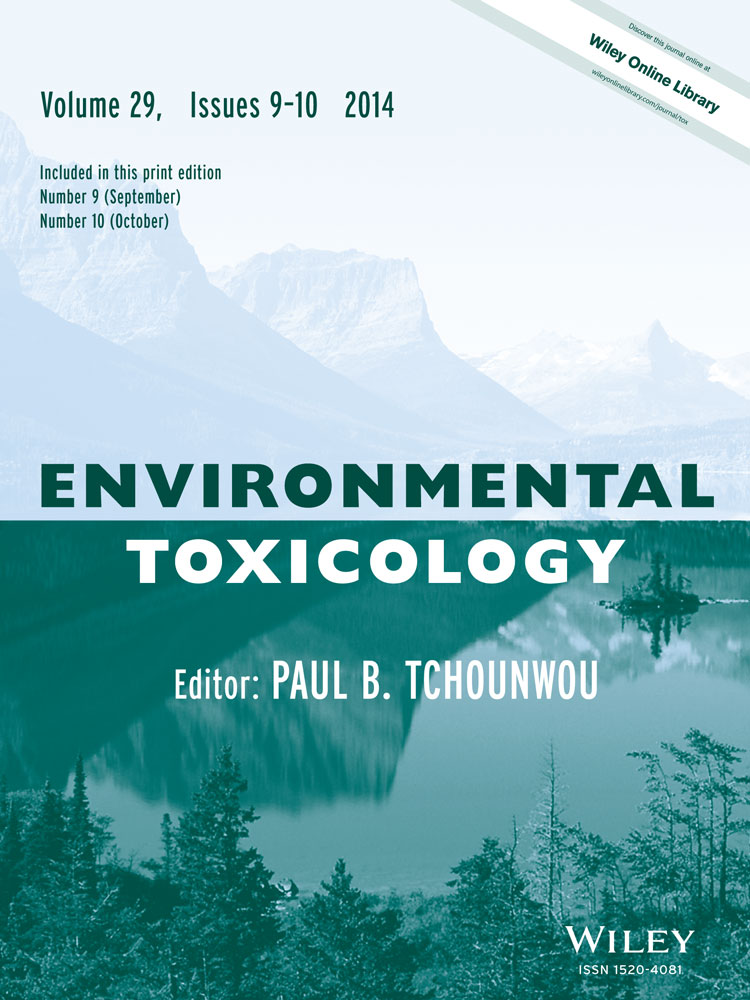View Item
- xmlui.general.dspace_homeCentros Regionales y EEAsCentro Regional Buenos Aires SurEEA BalcarceArtículos científicosxmlui.ArtifactBrowser.ItemViewer.trail
- DSpace Home
- Centros Regionales y EEAs
- Centro Regional Buenos Aires Sur
- EEA Balcarce
- Artículos científicos
- View Item
Genetic and biochemical biomarkers in the macrophyte Bidens laevis L. Exposed to a commercial formulation of endosulfan
Abstract
Previous studies in the wetland macrophyte Bidens laevis L have demonstrated that the insecticide endosulfan induces a high frequency of somatic chromosome aberrations in anaphase–telophase (CAAT) but no DNA changes as determined by the single cell gel electrophoresis (Comet) assay. Thus, cytogenetic biomarkers appear to be more sensitive to the toxic effects of the insecticide than the DNA molecule in the studied species. For this reason, the goals of
[ver mas...]
Previous studies in the wetland macrophyte Bidens laevis L have demonstrated that the insecticide endosulfan induces a high frequency of somatic chromosome aberrations in anaphase–telophase (CAAT) but no DNA changes as determined by the single cell gel electrophoresis (Comet) assay. Thus, cytogenetic biomarkers appear to be more sensitive to the toxic effects of the insecticide than the DNA molecule in the studied species. For this reason, the goals of this study were to use cytogenetic biomarkers—CAAT and abnormal metaphase—and defense biomarkers such as the activity of the antioxidant enzymes—guaiacol peroxidases (POD), glutathione reductase, and microsomal and cytosolic (m‐ and c‐) glutathione‐S‐transferase (GST)—to evaluate in B. laevis effects caused by a commercial formulation of endosulfan. The frequency of CAAT was increased at 5, 10, 50, and 100 μg/L endosulfan with respect to the negative controls by 3.1, 2.5, 2.5, and 3.2‐fold, respectively while the frequency of abnormal metaphases was also increased at the same concentrations by 3.5, 2.8, 3.2, and 11.3‐fold, respectively. In addition to these aneugenic effects, other abnormalities such as C‐mitosis and chromosome clumping were observed at 10 μg/L endosulfan. On the other hand, POD induction at 0.02, 0.5, 5, and 10 μg/L and m‐GST inhibition at 0.5, 10, and 50 μg/L in plants exposed during 24 h to endosulfan were observed but all of these responses were highly variable. In conclusion, only cytogenetic biomarkers like CAAT in B. laevis can serve potentially as early warning systems to detect environmentally relevant concentrations of endosulfan in aquatic ecosystems.
[Cerrar]

Author
Pérez, Débora Jesabel;
Lukaszewicz, Germán;
Menone, Mirta Lujan;
Amé, María Valeria;
Camadro, Elsa Lucila;
Fuente
Environmental Toxicology 29 (9) : 1063-1071 (September 2014)
Date
2014-09
Editorial
Wiley
ISSN
1520-4081
1522-7278
1522-7278
Formato
pdf
Tipo de documento
artículo
Palabras Claves
Derechos de acceso
Restringido
 Excepto donde se diga explicitamente, este item se publica bajo la siguiente descripción: Creative Commons Attribution-NonCommercial-ShareAlike 2.5 Unported (CC BY-NC-SA 2.5)
Excepto donde se diga explicitamente, este item se publica bajo la siguiente descripción: Creative Commons Attribution-NonCommercial-ShareAlike 2.5 Unported (CC BY-NC-SA 2.5)

